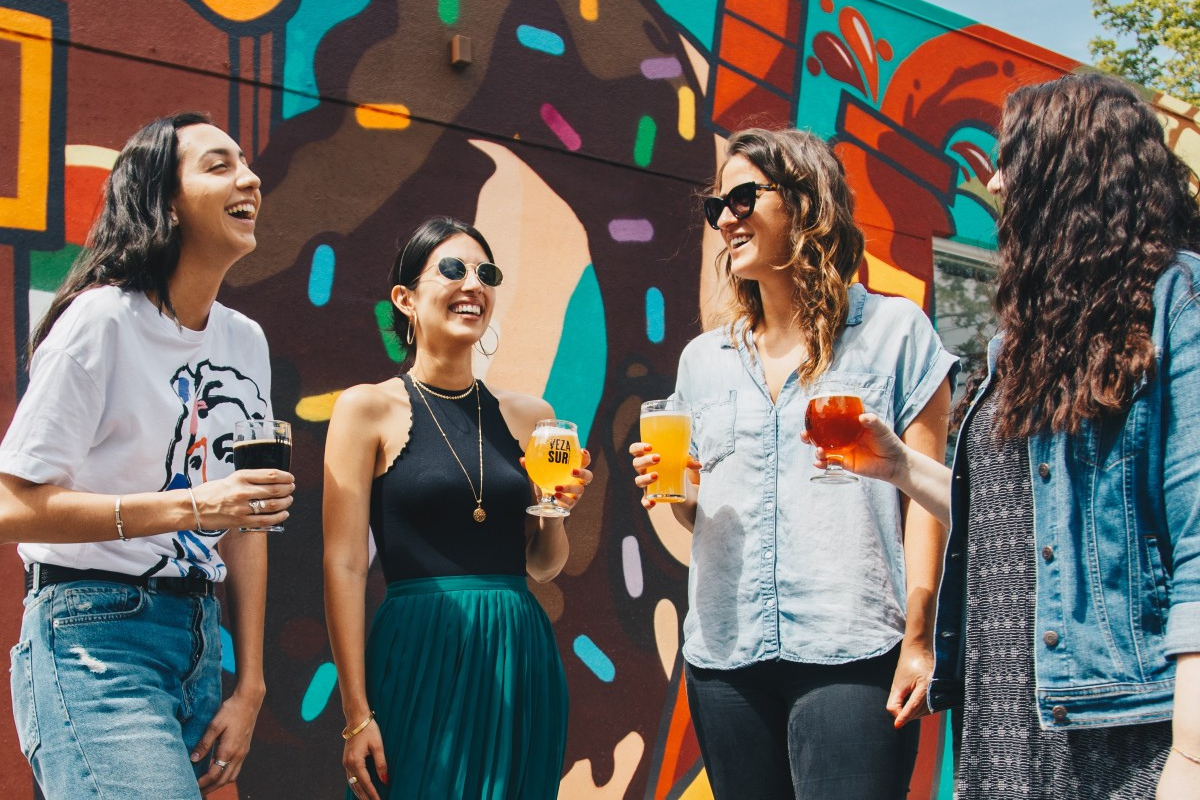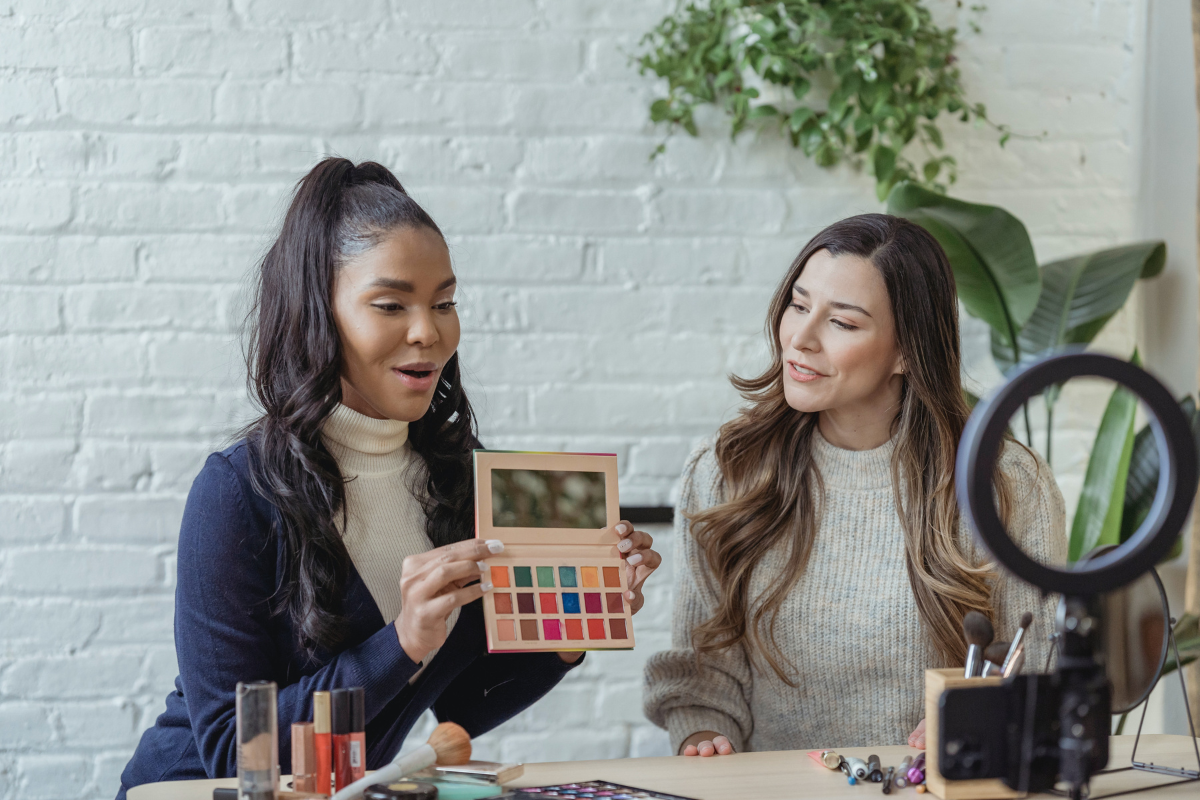Social sampling is a relative newcomer in the field as for most of its history, product sampling marketing has been fairly straightforward. The venues and creative execution have expanded, but the premise of distributing complimentary products to entice prospective buyers has stayed the same.
Like most things, technology has revolutionized how we approach age-old marketing tactics. In the past decade, digital product sampling has become a staple in any marketer’s toolbox. But with the vastness of options available in our online worlds, digital product sampling is not a one-size-fits-all approach and typically falls into four different categories:
- Open digital sampling via online opt-in
- Social sampling
- Ecommerce sampling
- Direct-to-Consumer (DTC) curated sampling
Today, we’re going to focus on social sampling and how you can use this method to achieve maximum business results.
What is social sampling?
Social sampling involves delivering a free product sample to people passionate about your brand and/or to influential people online, with the goal of them posting their experience and persuading friends, followers, subscribers, and other like-minded consumers to purchase.
What are the benefits of social sampling?
Scalable word-of-mouth
Unlike traditional sampling where brands distribute tens of thousands (or millions) of samples, social sampling involves fewer actual products being tried and relies on the impact and value of a word-of-mouth recommendation from one consumer to another.
Word-of-mouth advocacy is still the holy grail for brands. A groundswell of online conversation is critical for brand building and driving awareness and conversion. This is especially crucial for new product launches where things like ratings and reviews can make or break success.
Most marketers can appreciate utilizing product samples as a means to facilitate word-of-mouth. But for a long time, it was considered a value-add instead of a dedicated business strategy—the reason why has always been the challenge of scale.
With social media and the explosion of ecommerce reviews, brands finally had a way to deliver reach and impact that contended with traditional advertising channels. Thus, social sampling was born and became a bonafide business investment.
The question then became how to identify, mobilize, and activate consumers to start doing the talking.
Highly targeted and measurable
Compared to other methods of product sampling, social sampling is often highly targeted. Authenticity is why word-of-mouth works; the right person must talk about your product or service to the right people.
With social sampling, brands can identify consumers not just by basic demographics or purchases but also by more qualitative characteristics like shopping preferences, lifestyle behaviors, and personal values.
Sometimes product sampling can get a bad rap as just a bunch of people looking to get free stuff. When social sampling is done with the right context, the marketing “waste” is substantially less, and the user-generated content is much more impactful.
Additionally, social sampling is highly measurable. Brands can measure the number of reviews and user-generated content created, as well as clicks, likes, shares, and ultimately purchases from friends and followers.
Easy access to insights and product feedback

Social sampling is a natural opportunity to collect user opinions, and consumers appreciate it when brands consider their sentiments. In fact, 77% of consumers say they favor brands that ask for and accept customer feedback.
Anup Shah, vice president and chief marketing officer of the juice portfolio at PepsiCo Beverages, said sampling not only helps connect consumers with its new products — but the practice also allows the company to know how its items are doing and potential tweaks it may need to make.
Successful social sampling will almost always involve a post-campaign survey to organize overall feedback and gain consumer insights. This helps understand what is working and what’s not and reinforces relationship-building and loyalty.
How to do social sampling to drive reviews and results
Social sampling can be done in three ways:
- Activating your community of brand advocates
- Leveraging a third party “rented” audience
- Paying influencers to create sponsored content
Social sampling to an online brand community of advocates
At TINT, we believe every brand has a community of consumers. It’s just about cultivating those relationships and engaging with your community meaningfully. An online brand community is an excellent channel for social sampling as it is seeded with consumers eager to recommend your brand to others.
Your online brand community must be able to target consumers and make it easy for them to share on desired retail websites or with their online networks.

Digestive and probiotic brand Culturelle knows how necessary social proof and referrals are to drive sales. They aimed to spark meaningful conversation among parent audiences while activating authentic word-of-mouth with targeted social sampling.
With TINT’s help, Culturelle launched its online brand community, the Culturelle Clubhouse. The brand mobilizes and activates targeted consumers to share reviews, UGC photos and videos, and much more.
Their strategy has paid off in multiple ways, and the brand has amassed more than 22,000 brand advocates who have reached 20 million consumer-generated impressions.
Culturelle’s brand manager, Eric Bianco, says, “Our community is extremely engaged whether it is helping pick a new flavor for our next product launch, trialing a new product, or posting on their social channels to drive advocacy amongst other parents.”
Social sampling to a “rented” third party audience
For many up-and-coming brands, partnering with an established online community might make sense to help spark social conversation.
TINT’s peer influencer community, Smiley360, was first launched over 12 years ago to offer brands just that. Smiley360 is a community of more than a million socially connected people who enjoy discovering new brands and sharing their opinions. You can quickly rally a group of ideal consumers, deliver a free product sample, and drive reviews, social conversation, and photo and video UGC.
Gold Eagle’s brand, 303® Automotive, has been the premium choice for auto detailing products. Still, after adding several new auto care products into its line, 303® struggled with driving awareness in a highly competitive marketplace.
They mobilized 900 identified car enthusiasts from the Smiley360 community, delivered a free product sample, and prompted participants to share their experiences across social media, explicitly encouraging friends and followers to try the product at retailers like AutoZone and Advance Auto Parts.
From these 900 consumers, 303® saw a whopping 11,800 pieces of user-generated content and a 20% increase in online share-of-voice. Their social sampling campaign with Smiley360 was highly attributed to helping the brand achieve a 135% increase in unit sales year over year.
Social sampling to paid influencers for sponsored content

Social sampling to celebrity influencers and popular online creators has been a prevalent tactic for marketers for many years. Dozens of influencer marketplaces and agencies have sprouted up to help marketers partner with top-tier influencers.
An organized social sampling campaign for sponsored content can effectively drive awareness as many of these influencers command a large and dedicated following. It’s important to remember, however, that most influencers require payment in addition to a complimentary product experience.
Additionally, as the future of social media continues to evolve, a growing market of consumers is ready to move on from carefully curated, polished creator content on sites like Instagram. We’ve seen this trend with the rise of sites like BeReal, where a friend enjoying your product or service in a totally boring setting is perfectly acceptable and possibly even more influential than a glossy, staged, filtered, sponsored partnership.
Final Thoughts
According to a study from HubSpot, consumers discuss specific brands casually around 90 times per week. Additionally, 88% of shoppers like the idea of free samples, with more than half willing to write a review of the product and a third willing to post about it on social media. Make no mistake; consumers are eager to talk about the brands they’ve tried. Incorporating social sampling into your product sampling marketing supercharges your word-of-mouth and achieves advocacy at scale.
Questions about social sampling?
The TINT team is always here to answer your social sampling questions. Reach out to us – we’re happy to help.



